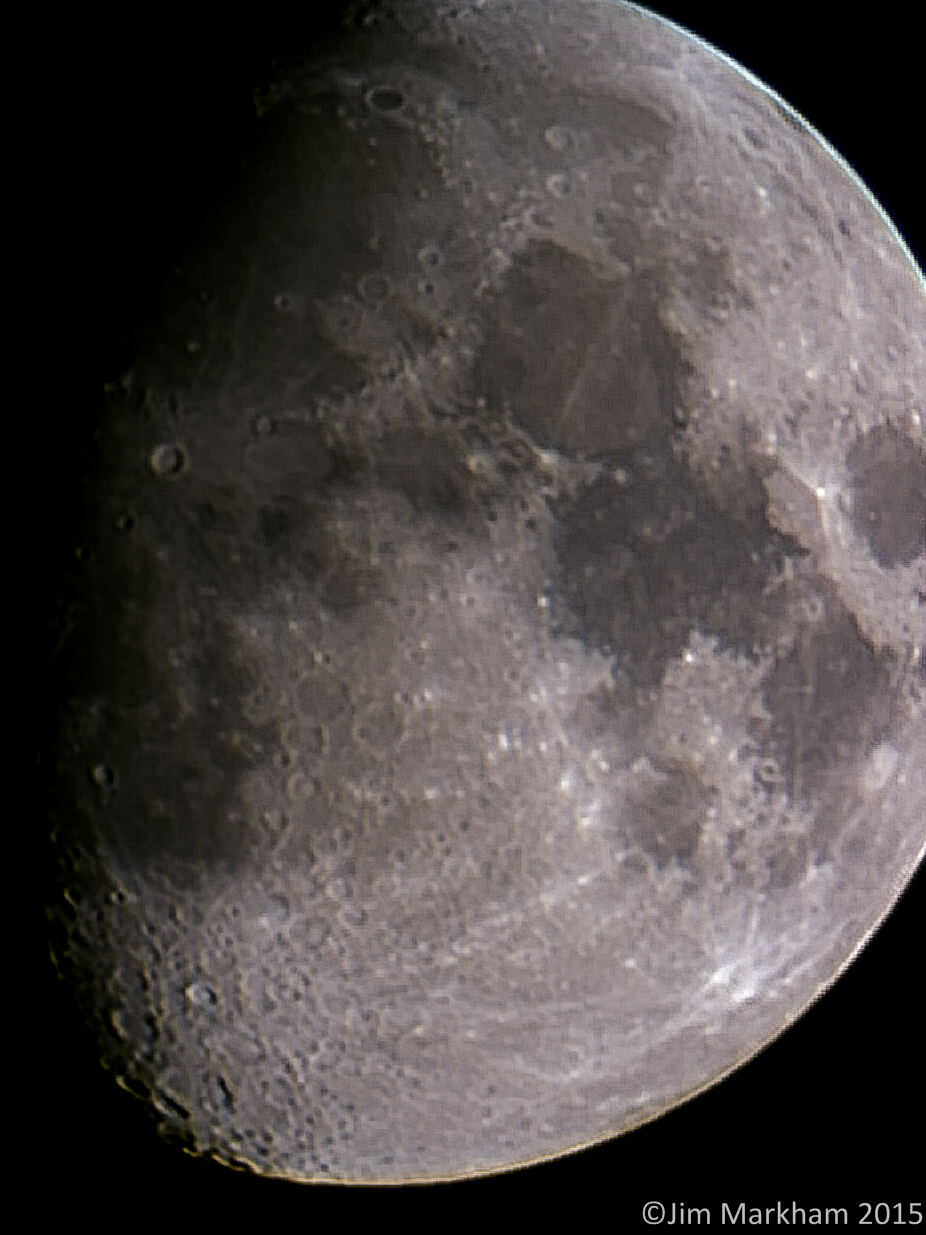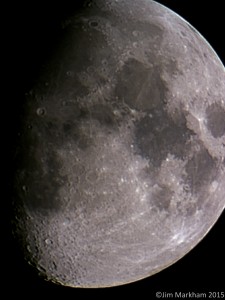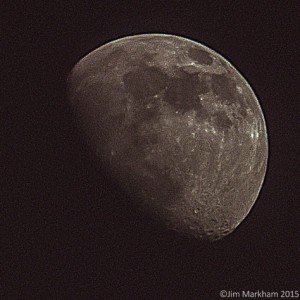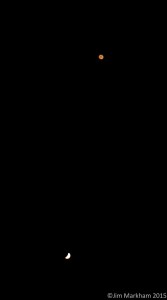
Lunacy, the condition suffered by a lunatic, now used only informally. The term lunatic derives from the Latin lunaticus which originally referred mainly to epilepsy and “madness” as diseases caused by the Moon(from wikipedia)… Or so they thought 2,300 years ago. I recently posted a thread on the Astronomy.net forum discussing the issues surrounding the full moon, and the amount of ‘natural light pollution’ it puts out, affecting astrophotography on those days. In an effort to combat that problem, one can either image the Moon directly on those nights, or look to other bright objects in the cosmos which don’t require as much signal-to-noise ratio.
First, trying my hand with unguided shots from the Travel Scope, using the NexImage 640×480 webcam, I was able to eke out a pretty decent image:

Granted, I’ve shot some better stuff with single images from a 75-300mm lens with a 2x teleconverter, but that was using the dSLR, which has much better image quality than a simple webcam. As a proof-of-concept, the setup works.
Looking up at the sky a couple of nights later, I captured a sequence of shots with the 18-200mm, then stacked them up in AviStack2.

100% crop from 18-200mm Canon lens (f/9, ISO200, 1/500s, 200mm).
This shot was captured before dark, but by using the stacking to bring out contrast at the trailing edge, the background sky drops off to near black, vice being blue.
Of course another target during periods of high illumination are planets. They’re relatively bright, and so don’t suffer the same contrast problems that wash out nebulae when the background brightness is high. Last month we had a rare conjunction of Jupiter and Venus, and the clouds were thankfully late enough coming in that I was able to get the scope set up out in the yard. Single shots were underwhelming, and I wasn’t able to get any of the Galilean moons onto the digital ‘film’ based on the exposures I was shooting. Single exposures were also not quite able to resolve the cloud bands on Jupiter… but a stack of video shots (about 700 frames) was able to get a decent shot of the clouds, albeit with a blown-out exposure of the crescent of Venus:

Astrophotographers, slide your indicators from ‘OFF’ to ‘ON’ and watch your lanes.

Leave a Reply